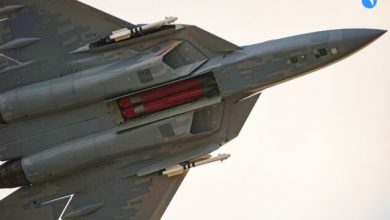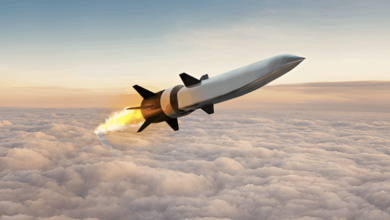British reservists conduct largest overseas exercise since the 1980s

Over 800 soldiers from the British Army’s 19th Light Brigade have completed what the Army describes as the largest overseas deployment of a reserve formation since the 1980s.
The unit took part in Exercise Rhino Heart in Sennelager, Germany, training alongside Canadian and Estonian forces to test rapid deployment, combined operations, and NATO interoperability.
According to the Army, the deployment forms part of the United Kingdom’s wider contribution to NATO reassurance and deterrence on the European continent. The exercise was designed to demonstrate that a fully reservist brigade can deploy at speed, operate effectively with allies, and maintain readiness under pressure. The 19th Light Brigade is the only fully reservist brigade in the British Army.
Speaking to her troops during the exercise, Brigadier Lisa Brooks, Commander of 19th Light Brigade, praised the unit’s performance. “If you want to go faster, go alone – but if you want to go further, go together. And that’s exactly what we’ve done here. You’ve gone further than any Reserve formation has in decades, and you’ve done it together.” She described the deployment as a milestone for British reservists and a demonstration of collective resolve.
The Army said that Exercise Rhino Heart was intended to test the brigade’s ability to project combat power rapidly onto the European continent. The scenario focused on coordinating reconnaissance, logistics, communications and urban maneuver at a pace reflective of modern operational environments. Forces were required to adapt to evolving tactical conditions while maintaining cohesion with allied units.
Brigadier Brooks emphasized that the exercise showed the brigade’s ability to support NATO in crisis. “Rhino Heart shows that 19th Light Brigade can deploy at speed and operate effectively on the European continent – a clear demonstration of our readiness to support NATO and deter aggression.”
The deployment also highlighted the role of reservists in the United Kingdom’s defense posture. Many of the soldiers involved balance civilian careers with military service. The exercise, the Army said, demonstrated both their readiness and their ability to integrate with active components and foreign units.
“You’ve made history – the largest deployment of an Army Reserve brigade and formation since 1985,” Brigadier Brooks told the troops. “That’s an incredible achievement and something every one of you should be proud of.”
Among those taking part was Lance Corporal Craig Mason, a joiner in civilian life and a reservist with 4th Battalion The Duke of Lancaster’s Regiment. Mason described the exercise as a rare opportunity to operate at scale. “It’s a real break from normal civilian life. I love getting out here with the lads, with the battalion, and getting stuck into a proper exercise. It’s what we train for.” He added that working at battle group level provided “a whole new perspective” on how the Army operates.
The exercise also served as a venue for allied cooperation and shared training with Canadian and Estonian forces. The Army stated that joint fieldwork strengthened trust, interoperability and understanding of how reserve units can reinforce active formations across NATO territories.
“We’ve been proud to train with our Canadian and Estonian partners,” said Brigadier Brooks. “What we’ve achieved together has absolutely put us on the map within NATO.”
Senior employers from the UK civilian sector were also invited to observe the training, underscoring the Army’s message that service in the reserves develops leadership, planning skills and problem-solving capabilities transferable to the workplace.
As operational planning increasingly assumes fast-moving scenarios in Europe, the ability to reinforce allies quickly is central to regional stability. Exercises of this scale indicate that reservist formations are intended to play a larger role in readiness, not only in support but in front-line integration.





